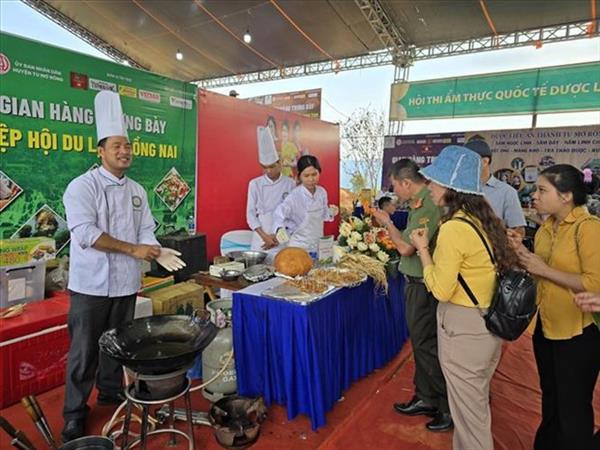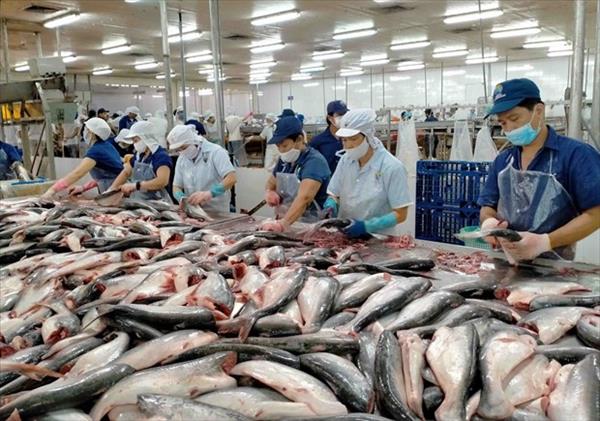Ca Mau, April 4 (VNA) – The southernmost province of Ca Mau is taking measures to cope with climate change and rising sea level as the impacts have become more pronounced in recent years, said Secretary of the provincial Party Committee Duong Thanh Binh.
Ca Mau has three sides facing the sea with a coastline of 254 km, 87 estuaries and more than 10,000 km of rivers and canals, making the province prone to climate change.
The increasing frequency of droughts, saltwater intrusion, tropical low pressure, whirlwinds and flood tides has harmed local production and daily life.
The tide peaks have been rising in recent years from 1.5 meters in 2007 to 2.1 meters in 2011 on the Ganh Hao River. The flood tides in 2013-2014 affected more than 6,000 hectares of production land and submerged 2,360 houses.
Head of the local Irrigation Department Nguyen Long Hoai, who is also chief of office of the Steering Committee on Natural Disaster Prevention and Search and Rescue, said if the flood tide continues to increase, some 290,000 hectares of cultivating land in Ca Mau will be flooded in the near future, with Nam Can and Ngoc Hien districts especially at risk.
The negative impacts of climate change also caused land erosion in coastal areas, according to Deputy Director of the provincial Department of Agriculture and Rural Development To Quoc Nam.
It was estimated that 57km of the western coast in Ca Mau has been eroded, while 48km of the eastern coast has been wiped out. Coastal land erosion cause an annual loss of 450 hectares, submerging a large area of preventive forests.
Given these facts, local authorities are increasing communication campaigns to raise public awareness of climate change and its impacts on socio-economic development, integrating natural disaster prevention into socio-economic development plans and mobilising financial resources to implement urgent and long-term tasks such as planting coastal preventive forest, reinforcing dykes and resettlement projects.
The province is also shifting to growing plants and raising animals that can adapt to environmental changes.
The agricultural reshuffle is considered an important part in local economic restructuring efforts to ensure economic growth and environmental protection.
The locality also aims to develop highly-competitive products such as shrimp, organic rice, and forestry products, as well as to apply sustainable intensive cultivation and promote science-technology transfer to increase quality and reduce post-harvest losses.
Aquaculture breeding is expected to create breakthroughs for the agricultural sector. Aquatic seafood product output is hoped to reach 370,000 tonnes by 2020, including 190,000-210,000 tonnes of shrimp, an annual average increase of 4 percent.
The local People’s Committee has also directed enhancement of risk management capacity and proposed the government consider providing financial assistance for the province to build and upgrade the sea dyke system.
The province needs an estimated 2 trillion VND (8.8 million USD) to shore up the dyke system.
Ca Mau has three sides facing the sea with a coastline of 254 km, 87 estuaries and more than 10,000 km of rivers and canals, making the province prone to climate change.
The increasing frequency of droughts, saltwater intrusion, tropical low pressure, whirlwinds and flood tides has harmed local production and daily life.
The tide peaks have been rising in recent years from 1.5 meters in 2007 to 2.1 meters in 2011 on the Ganh Hao River. The flood tides in 2013-2014 affected more than 6,000 hectares of production land and submerged 2,360 houses.
Head of the local Irrigation Department Nguyen Long Hoai, who is also chief of office of the Steering Committee on Natural Disaster Prevention and Search and Rescue, said if the flood tide continues to increase, some 290,000 hectares of cultivating land in Ca Mau will be flooded in the near future, with Nam Can and Ngoc Hien districts especially at risk.
The negative impacts of climate change also caused land erosion in coastal areas, according to Deputy Director of the provincial Department of Agriculture and Rural Development To Quoc Nam.
It was estimated that 57km of the western coast in Ca Mau has been eroded, while 48km of the eastern coast has been wiped out. Coastal land erosion cause an annual loss of 450 hectares, submerging a large area of preventive forests.
Given these facts, local authorities are increasing communication campaigns to raise public awareness of climate change and its impacts on socio-economic development, integrating natural disaster prevention into socio-economic development plans and mobilising financial resources to implement urgent and long-term tasks such as planting coastal preventive forest, reinforcing dykes and resettlement projects.
The province is also shifting to growing plants and raising animals that can adapt to environmental changes.
The agricultural reshuffle is considered an important part in local economic restructuring efforts to ensure economic growth and environmental protection.
The locality also aims to develop highly-competitive products such as shrimp, organic rice, and forestry products, as well as to apply sustainable intensive cultivation and promote science-technology transfer to increase quality and reduce post-harvest losses.
Aquaculture breeding is expected to create breakthroughs for the agricultural sector. Aquatic seafood product output is hoped to reach 370,000 tonnes by 2020, including 190,000-210,000 tonnes of shrimp, an annual average increase of 4 percent.
The local People’s Committee has also directed enhancement of risk management capacity and proposed the government consider providing financial assistance for the province to build and upgrade the sea dyke system.
The province needs an estimated 2 trillion VND (8.8 million USD) to shore up the dyke system.
VNA/VNP

















